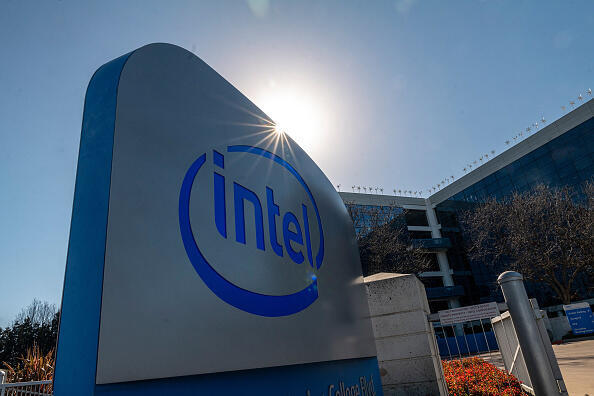
Intel’s struggles deepen with $16.6 billion loss but AI chip growth provides hope
Company eyes AI and data center demand as it cuts costs and reorganizes.
Intel reported a massive third-quarter loss of $16.6 billion, surpassing analysts' expectations, as revealed in the chip giant’s financial results published on Thursday amid an ongoing wave of layoffs. This wave has also impacted Israel, where hundreds of Intel employees received layoff notices this past week. Despite the losses, a relatively optimistic revenue forecast sent Intel's stock up about 15% in after-hours trading.
Intel recorded a $15.9 billion goodwill write-off and an additional $2.8 billion write-off related to a company-wide reorganization that includes laying off 15,000 employees globally. Revenue for the third quarter stood at $13.3 billion, marking a 6% decline from the same period last year.
However, for the first time in a while, there appears to be some positive outlook, with Intel providing a slightly better-than-expected forecast for the final quarter of the year. It now anticipates revenue of between $13.3 billion and $14.3 billion, compared to analysts’ expectations of $13.7 billion, and projects that fourth-quarter losses will be about half of those in the third quarter.
The improved outlook is attributed to demand for AI and data center chips. Although Intel remains behind Nvidia in this segment, it still benefits from the sector’s momentum. In the third quarter, AI and data center chips were the only segment to record substantial growth, rising 9% to generate $3.3 billion in revenue. Meanwhile, Intel’s computing division and its new chip manufacturing (foundry) operations both saw revenue declines of 7% and 8%, respectively.
Intel stated that it is making progress on its plan to dramatically reduce operating costs by $10 billion by next year.
The company has largely missed out on the surge in investments in high-performance AI chips for data centers, driven by increased business adoption of generative AI technology—a market led by Nvidia, with AMD as a close competitor.
As one of the largest manufacturers of PC chips, Intel has benefited from renewed demand for PCs, spurred by the rollout of on-device AI features and a new Windows update cycle after a prolonged slump, helping the company exceed Wall Street's modest expectations.
Analysts also anticipate that demand for Intel's traditional server chips—its mainstay data-center semiconductors—will recover in the second half of the year after several quarters of weak demand, as investment shifts toward AI chips. However, Intel’s market share in the PC and server CPU segments remains under pressure from AMD, whose market valuation now surpasses Intel’s and who stands as the closest competitor to market leader Nvidia in AI graphics processors.
In an interview, Intel CFO David Zinsner stated that the company plans $12 billion to $14 billion in capital expenditures for 2025.
A disappointing quarterly report in August had raised doubts about CEO Pat Gelsinger's strategy to revive the struggling chipmaker. Rosenblatt Securities analyst Hans Mosesmann noted that Intel investors have two main questions: "Can it be fixed?" and "Who will fix it?" Gelsinger, who became CEO in 2021, has implemented job cuts, suspended dividends, and secured a new chip production deal with Amazon.com—one of the first major agreements involving Intel's latest 18A technology. Despite these efforts, the stock has fallen over 50% this year, and Intel’s market value has slipped below $100 billion.
While some investors are seeking updates on Intel’s progress in establishing its advanced 18A manufacturing technology, slated for launch in 2025, others advocate for spinning off the company’s manufacturing division, which would leave Intel focused on chip design. "Many would welcome Intel selling off their foundry business," said Daniel Morgan, portfolio manager at Synovus Trust, which holds shares in both Intel and AMD.
This week, Intel cut hundreds of jobs in Israel after earlier layoffs in the U.S. The Israeli cutbacks included the closure of Granulate, a company Intel acquired for $650 million less than three years ago, resulting in the layoff of its 100 employees. The first phase of Intel’s cutbacks was announced in August, revealing a $10 billion cost-cutting plan that included laying off 15,000 employees—15% of its workforce—and targeted measures like canceling leasing programs and reducing employee benefits. The second phase was announced last month, which stated that Intel's foundry division—the business of manufacturing chips for other companies—would become an independent subsidiary with its own board of directors.
Reuters contributed to this report.














